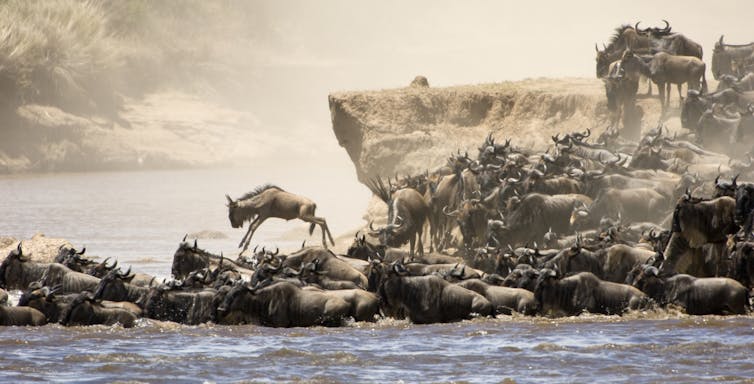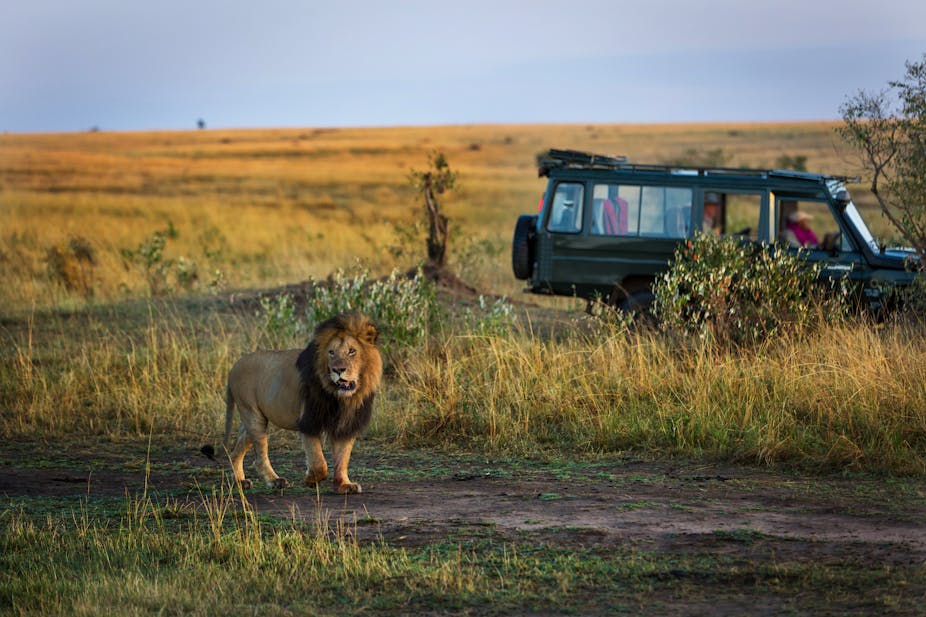More than 30 million tourists visit Africa every year. Over half of the international arrivals are for business purposes, and may partake in tourist activities as well, while 15% travel for pure tourism and 30% visit friends and family.
Tourists select the continent as a destination for wildlife viewing and to enjoy the sunny skies. Africa is the world’s number one destination for safaris which range from the exotic to the very simple.
The tourism industry is one of the most important for the continent: it provided 12.8 million people with jobs, directly and indirectly, in 2011. Tourism in 2012 contributed over US$36 billion or 2.8% of the continent’s GDP.
The continent’s vast and diverse nature makes it complex and difficult to decide on the best region for a safari. But the east, central and southern parts of the continent are by far the preferred choices. These areas generally have well developed or fast developing tourism sectors. There is an abundance of wildlife as well as low to no visa requirements. Tourists to these regions mostly come from countries like France, the UK, the USA, Germany and Portugal.
Below is a quick guide to some of the safari hot spots on the African continent.
East Africa
East African countries are strongly reliant on the tourism industry for generating income. Strong improvements in marketing and cooperation between these nations will help to ensure the success of this vital tourism sector.
Standardised criteria for hotels, restaurants and other services across these countries will make it easier for tourists to find suitable services. These countries possess various natural and cultural resources that make tourism possible.
The Serengeti wildebeest migration is the main reason Kenya and Tanzania have become popular safari destinations. This migration sees millions of wildebeest, accompanied by various other animal species, move between Tanzania and Kenya. The best places to view this migration include Kenya’s Masai Mara and Tanzania’s Serengeti National Park. .

And while in the area, don’t forget to visit Africa’s highest mountain - Mount Kilimanjaro in Tanzania’s Kilimanjaro National Park.
The Ngorongoro Crater Conservation Area is also a great choice with an abundance of big 5 - the African elephant, African lion, white/black rhinoceros, African leopard and the Cape buffalo - and will not disappoint.
Central Africa
Civil wars and terrorist groups have made it dangerous to travel to some countries in this region. Many tourists still take their chances, though, as Central Africa is an area of immense natural beauty.
The Central African Republic, the Democratic Republic of the Congo and Rwanda are great places to view the endangered mountain gorillas. The best places for viewing them include the Virunga National Park in the eastern Democratic Republic of the Congo, Mgahinga Gorilla National Park in south-west Uganda, or Volcanoes National Park in north-west Rwanda.
Various factors have threatened the population of gorillas, including poaching, habitat loss, disease, war and unrest and poverty. Today, due to conservation efforts, the population of mountain gorillas is showing steady growth. The fact that many tourists want to get up close to these animals also drives conservation efforts, since with tourism comes economic improvement.
If you’d prefer to take part in Africa’s best on-foot chimpanzee encounters, visit Kibale Forest in Uganda.
Southern Africa
South Africa, Namibia, Botswana, Zimbabwe, Zambia and Malawi offer very diverse wildlife. This is because of the variety of biomes in the region.
Chobe National Park is home to the biggest concentration of elephants in the world - 70 000 of them. It lies between the Chobe River and the Okavango Delta in the north eastern parts of Botswana. Also in Botswana, the Moremi Game Reserve, in the iconic Okovango Delta, is the first reserve in Africa to be established by local residents.
The Etosha National Park in the northern arid region of Namibia offers great chances of spotting endangered black rhinoceros as well as flamingos in the salt pans.
The Kruger National Park in South Africa is in its own league because of its diversity of animals as well as advanced environmental management techniques and policies.
iSimangaliso Wetland Park was the first site in South Africa to be awarded World Heritage status. It contains most of South Africa’s remaining swamp forests and is Africa’s largest estuarine system, which is a partially enclosed body of water where fresh water from rivers and streams mix with salt water from the ocean. The park borders Kosi Bay and St Lucia Lake which is the only place in the world where you can find sharks, hippopotamus and crocodiles in the same body of water.
Addo Elephant National Park in the Eastern Cape province is the only park where you can find the Big 7: the African elephant, Cape buffalo, African lion, African leopard, African rhino as well as whales and Great White sharks.
The Kgalagadi Transfrontier Park consists of mostly unspoiled wilderness in the north of South Africa, crossing over into Botswana. This park is largely located in a desert area and is famous for animal species such as the Kalahari black-maned lions and the Gemsbok or Oryx.

